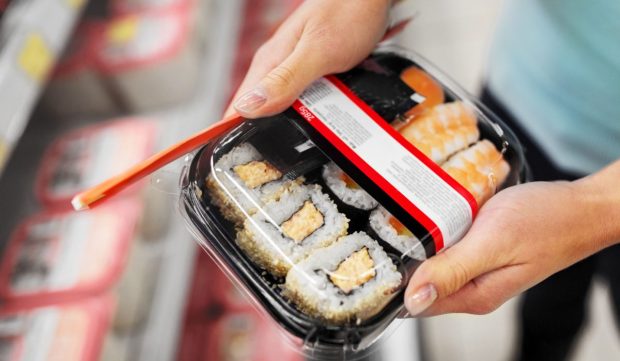Kroger Becomes Top US Sushi Seller as Grocers Broaden Scope

Kroger is reportedly now the number one sushi seller in the United States — a circumstance that comes alongside grocers’ ongoing effort to become consumers’ one-stop shop for food of all kinds.
According to a Wall Street Journal (WSJ) report Monday (Aug. 21), Kroger has risen to the top of the category, selling more than 40 million pieces of sushi per year. The grocery giant reportedly noticed its lead in 2020 and has only continued to grow its share in the category since then.
“When customers think of sushi, we want them to think of Kroger,” Stuart Aitken, the grocer’s chief merchant and marketing officer, told the news outlet.
Certainly, The Kroger Company is focused on driving sales of more than just raw groceries. In recent years, the grocer has been opening in-store multi-brand pickup and delivery restaurants in partnership with virtual food hall company Kitchen United.
Plus, Kroger has been expanding its Home Chef meal kit and ready-to-cook meals business. Earlier this year, Home Chef announced plans to open its largest-yet production and distribution center, with the new facility set to account for 30% of all the company’s business.
The grocer has even been getting into the on-demand food delivery category, partnering with DoorDash and Uber Eats on sushi delivery.
“We want customers, when they think food, [to] think Kroger,” the grocer’s CEO Rodney McMullen said in a March presentation for the BofA 2023 Consumer & Retail Conference. “We have a lot of customers that do that when they think [grocery] shopping, but when they think about what’s for dinner, … we would way under index in that consideration set. … We believe it’s a huge growth opportunity for us and an important area.”
Kroger is not the only grocer looking to grow its share of overall food occasions. Walmart has been selling Blue Apron meal kits and adding in-store restaurants.
Earlier this year, Ahold Delhaize subsidiary Giant Food announced the launch of its first in-supermarket fast-casual eatery, Nalley Fresh, with self-service ordering kiosks available.
Amazon’s premium grocery chain Whole Foods Market is reportedly considering opening commercial kitchens to make food for its in-store food bars and refrigerator cases.
And in a recent interview with PYMNTS, Geoff Alexander, president and CEO of restaurant chain Wow Bao, which has both a consumer-packaged goods (CPG) and hot food presence at thousands of grocery stores, spoke to the trend of supermarkets looking to capture more food occasions.
“The grocery store is trying to be the one-stop shop,” Alexander said. “Whether it’s for ready-to-eat meals, food for another night, or the typical grocery shop, they’re trying to entice the consumer to use the grocery store in many different ways.”
These efforts seem to be working. Data from PYMNTS’ study “Connected Dining: Ready-to-Eat Meals are Eating Restaurants’ Lunch,” which drew from an April survey of more than 2,300 U.S. adults, revealed that 57% of consumers (roughly 96 million people) had bought ready-to-eat meals in the previous month, and 65% purchased their most recent one from a grocery store.

